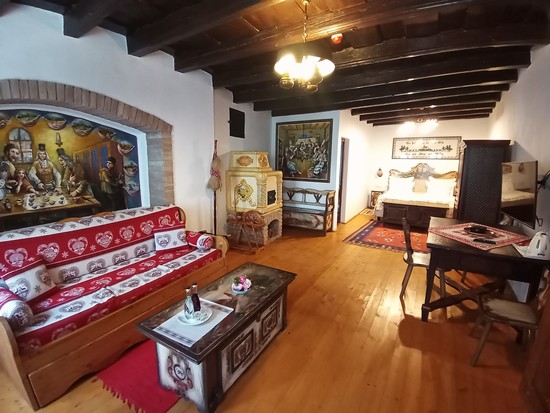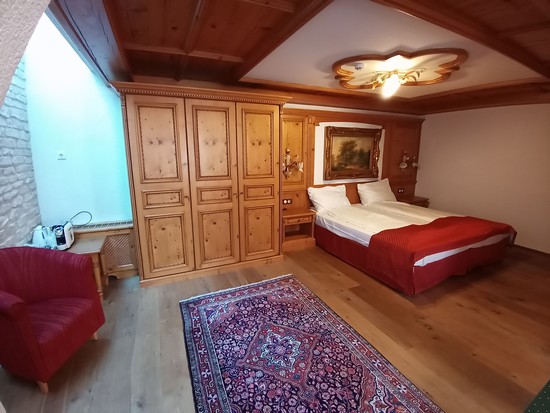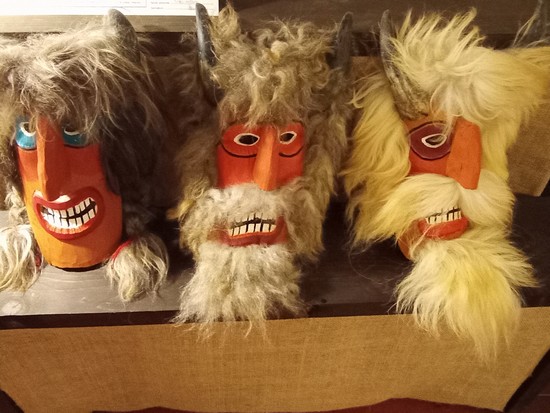 Nestled amidst the rolling Carpathian Mountains, Transylvania beckons the intrepid traveler with promises of enchanting landscapes, rich folklore, and a timeless aura that has captured the imaginations of countless adventurers. As I set foot in this captivating region, I couldn't help but feel the thrill of stepping into a realm where history and legend intertwine like ivy on an ancient castle wall. Transylvania, often associated with Bram Stoker's iconic character, Count Dracula, holds secrets that extend far beyond the realm of vampires. Join me on this journey as we uncover the allure of Transylvania, where history meets myth, and the past comes alive in every cobblestone street.  "I have learned not to think little of any one's belief, no matter how strange it may be. I have tried to keep an open mind, and it is not the ordinary things of life that could close it, but the strange things, the extraordinary things, the things that make one doubt if they be mad or sane." - Bram Stoker, Dracula 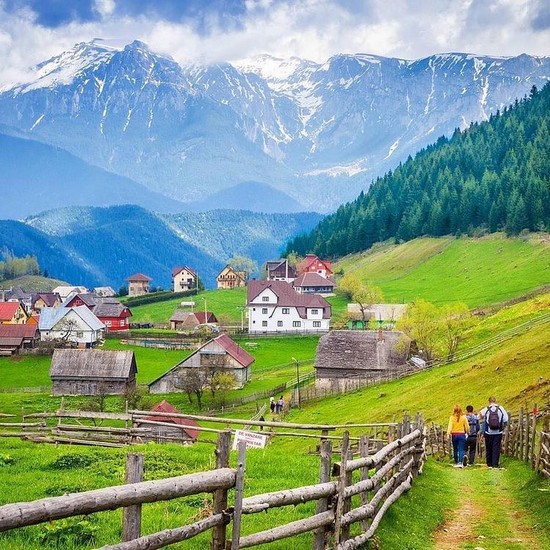 Transylvania is not only a geographical territory; it is also a state of mind. This alternatively wild and touristy region in central Romania, is a land of stark contrasts. It's a place where Gothic castles and medieval villages coexist with vibrant cities and pristine natural landscapes. The dichotomy between its timeless folklore and the modern world is a captivating dance that leaves travelers spellbound. 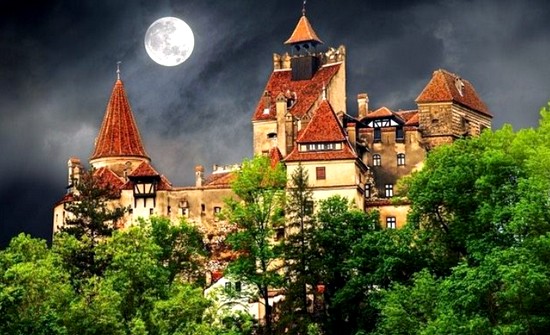 As we delve into the heart of Transylvania by an antique train inherited from the Ceausescu's "Golden Epoch", we inevitably come face to face with the enduring legend of Count Dracula: a character that has both thrilled and terrified generations. Bram Stoker's novel, "Dracula," may have been inspired by the historical figure Vlad the Impaler, but it is the fictional Count who continues to cast his shadow over Transylvania. In search of the Count's footsteps, we traverse the uneding corridors of Bran Castle, often referred to as "Dracula's Castle." While there's no historical evidence that Vlad the Impaler ever lived here, the castle's looming presence and Gothic architecture make it an unforgettable experience. As night falls, the castle takes on an even more sinister aura, shrouded in the mystery of the vampire legend. 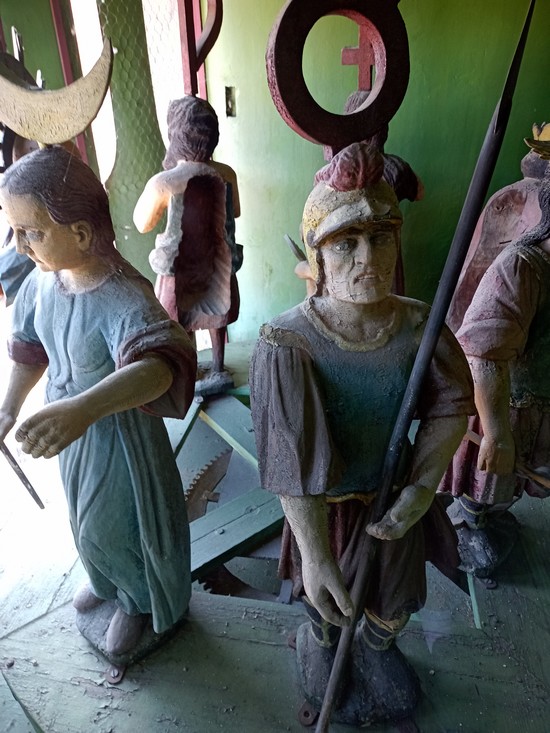 However, Transylvania's allure extends well beyond the fictional tales of blood-sucking creatures of the night. The region boasts a rich tapestry of history and culture that beg to be explored. Its natural beauty is equally captivating. The Carpathian Mountains, with their pristine forests and wildlife, provide a playground for hikers and nature enthusiasts. The region's picturesque villages, like Viscri and Biertan, invite you to wander through time as you explore their well-preserved architecture and traditions. 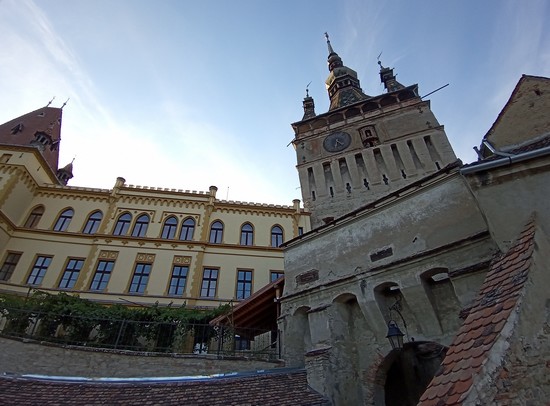 Yet, our favourite city is definitely Sighisoara, where history and myth intertwine. This citadel, meticulously preserved through the ages, stands shoulder to shoulder with iconic fortresses like Carcassonne and Mont Saint Michel, but it possesses a unique allure that transcends the legend of "Count Dracula." 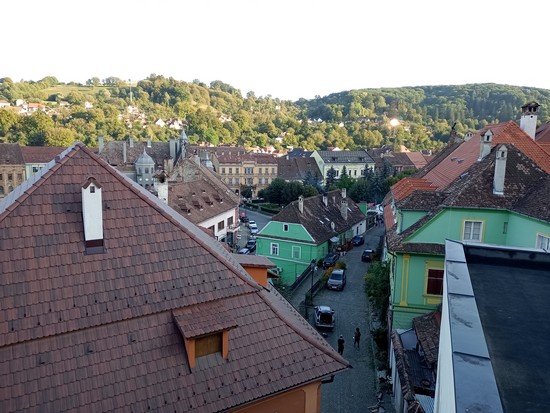 Let's set aside Bram Stoker's crimson-clad protagonist, who drew inspiration from the valiant and rugged boyar, Vlad Tepes, also known as "The Impaler." Born amidst the cobbled streets of Sighisoara, the authenticity of the house where this historical figure first saw the light of day remains shrouded in mystery, like a well-guarded secret. Yet, the mystique of Dracula continues to beckon throngs of tourists to Romania's most picturesque city. It's a region brimming with splendor, where the Dracula legend serves as an enticing gateway to the enigmatic and captivating world of Transylvania. 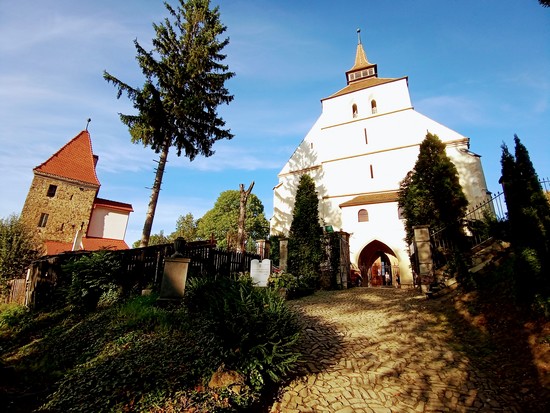 Unlike Brasov, our second favorite Transylvanian city, Sighisoara has managed to preserve its quaint village charm. A leisurely stroll from the railway station to the Citadel unveils flower-strewn, vibrant streets, devoid of any traces of a working-class presence. Here, the relentless pace of our modern age seems to have left no imprint. The Citadel, crowned by nine watchful towers, boasts a vibrant baroque palette, lending an air of joyousness to its surroundings. The meandering, cobbled streets, ideal for leisurely strolls, transform into magical, cinematic settings when blanketed by the thick, drifting snow of winter. 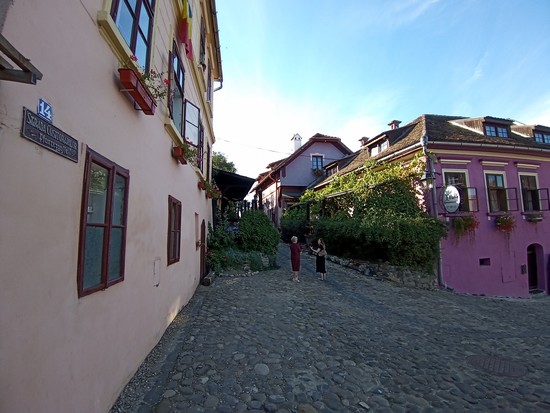 Our journey led us to Sighisoara in October 2021, amid a peak in COVID-19 cases across Europe. Despite the global turmoil, the streets, restaurants, and shops played host to a predominantly local audience. Although the pre-COVID-era crowds had yet to return, Sighisoara remained a privileged haven—a Romanian city untarnished by time, bearing traces of both Saxon and Hungarian heritage. Weathered street signs, their letters faded by the centuries, still whisper in the echoes of the German language. Their origins trace back to the 12th century when Hungarian kings beckoned Saxon merchants to these lands. Sighisoara swiftly transformed into a nexus of military and commercial significance within the Holy Roman Empire, its flourishing guilds forging an imposing citadel atop the hill. 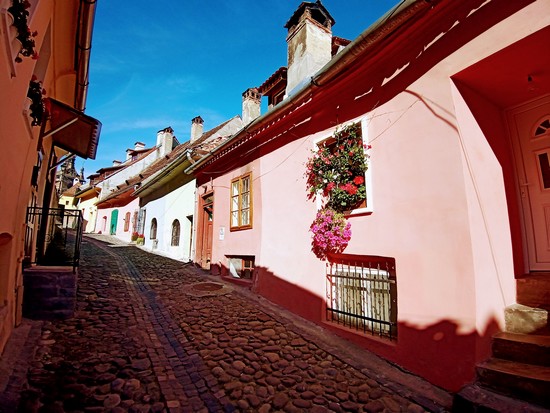 The departure of the last Saxons from the country occurred during Ceausescu's presidency, leaving behind only a few exceptions. The Magyars (Hungarians) endure, albeit in smaller numbers compared to western Romania. They bring with them their churches, gastronomic delights (Transylvanian cuisine, robust and flavorful), and the lingering nostalgia of tourists who still envision "Segesvár" as part of Greater Hungary, a sentiment intertwined with the loss of Transylvania in the Treaty of Trianon. 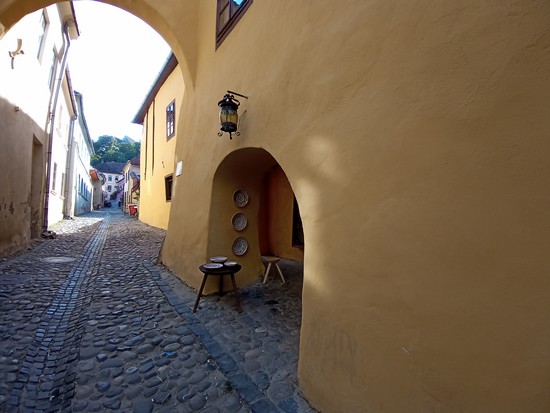 So, what are the quintessential experiences awaiting you in Sighisoara and its surrounding regions? A comprehensive exploration could span weeks, filled with hidden monasteries, rustic "colibas" restaurants, organic farms (Romania is a pioneer in this domain), and the chance to partake in one of Europe's most abundant game reserves. However, most visitors, confined to a two or three-day sojourn, find their focus trained on the Citadel itself. In medieval times, Sighisoara stood sentinel on the border of the Ottoman Empire, enduring relentless raids and sieges. Between the 14th and 16th centuries, various guilds within the city were tasked with erecting and maintaining defensive towers. These towers, aside from the renowned Clock Tower, bear the names of their guilds: Furriers, Rope-makers, Cobblers, Tailors, Blacksmiths, Butchers, Tanners, and Tinsmiths. 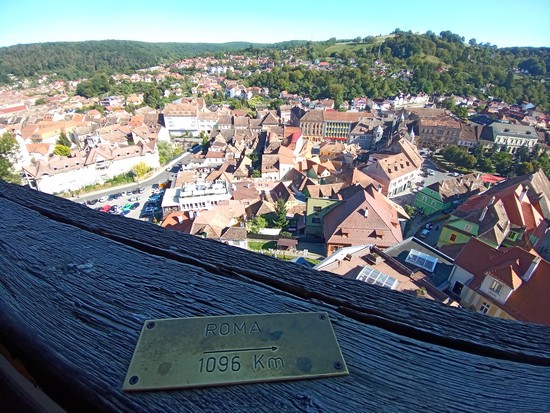 From the 17th-century perch of the Clock Tower, an astounding panorama unfolds, revealing the city and its idyllic countryside. With its tiled roofs and colorful facades, this view is a veritable feast for the eyes—an Instagrammer's utopia. 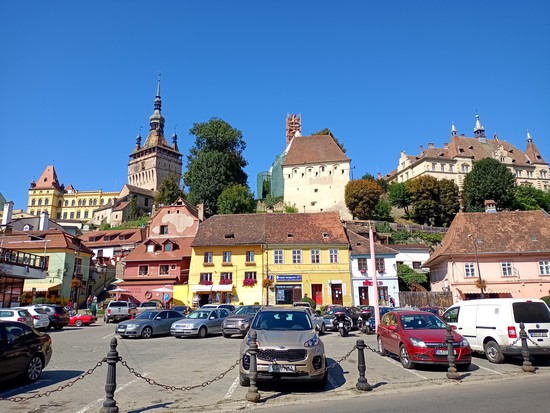 Citadel Square, or Piata Cetatii, exudes a tranquil ambiance during daylight hours. However, once the sun dips below the horizon or rises in the early morning, and the tourists have retreated, this square effortlessly transports you to a bygone era. Save for a few Dacia cars discreetly parked along medieval facades (mostly now home to restaurants and boutiques), it's as though time itself has stood still. Wars and pandemics may have brushed against Romania, communism may have cast a pall of repression, and capitalism might have reshaped -right and also wrong- traditions and mentalities. But this square, like the rest of the city, remains an unwavering testament to the ages. The house of Dracula, or Vlad Tepes, is conveniently located nearby, next to the more intriguing Stag House from the 17th century, adorned with antlers peeking out from its corners and a charming mural depicting the stag's form. 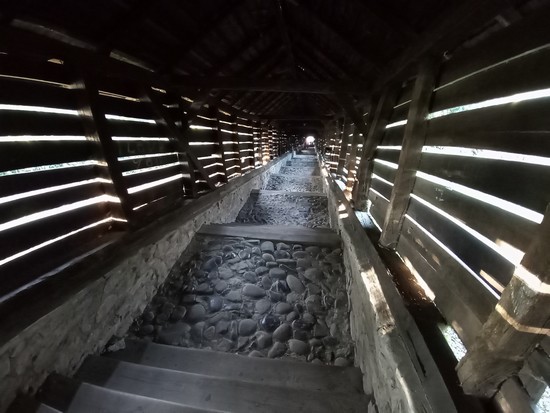 The Covered Staircase, a relic from the 17th century, cloaked in timber and guarded by walls, offers a delightful ascent of 176 steps leading to the 15th-century Gothic "Church On the Hill." Renowned for its exquisite frescoes (depicting St. George's battle with the Dragon, the Last Judgment, and the Passion), it affords a splendid view of the neighboring Saxon cemetery and the verdant forests beyond. Taking a moment to relax on a bench, surrounded by the melodies of street musicians serenading the town, is a truly serene experience. 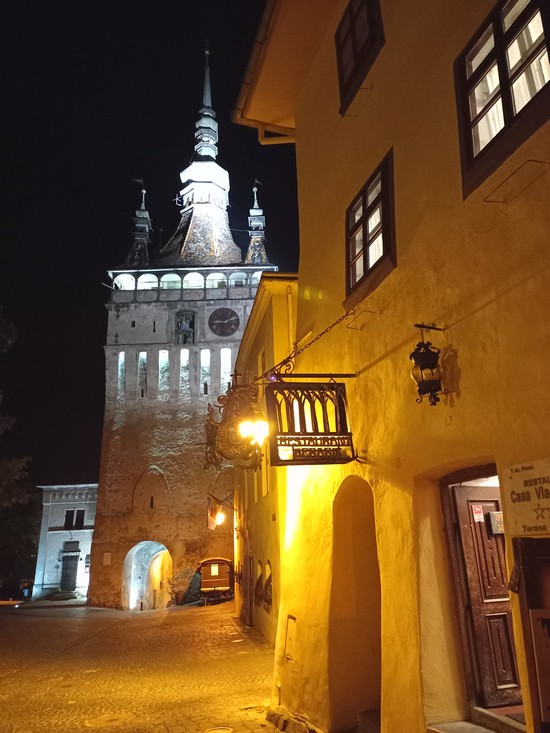 The Late Gothic Monastery Church from the 17th century is well worth a visit, where 35 precious oriental carpets line the walls, and a 15th-century bronze baptismal font adds to its allure. 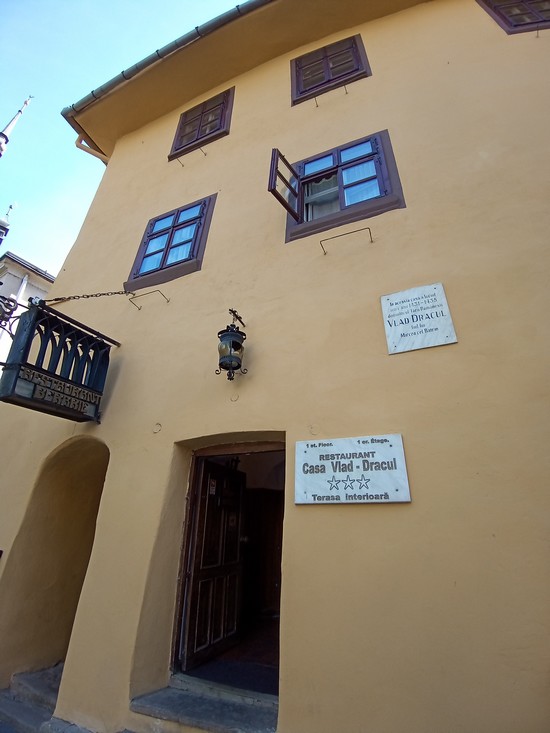 "I am Dracula, and I bid you welcome, Mr. Harker, to my house." - Bram Stoker, Dracula. The most frequented landmark stands at number 5, Strada Cositorarilor. Purported as the birthplace of Dracula/Vlad Tepes in 1431, this charming ochre-painted house, adorned with a wrought iron dragon symbolizing the chivalric Order of the Dragon to which Vlad Tepes belonged, may well be the oldest in Sighisoara. Today, it has been transformed into a medieval-style tourist restaurant, offering a decent cuisine within a lively atmosphere. On the day of our visit, it was predominantly Romanian in patronage, but one can anticipate a more international flair when German and British groups return in a post-COVID era. Within, a small museum on the first floor houses a collection of weapons, alongside the bedroom where Vlad may have been born in 1431. 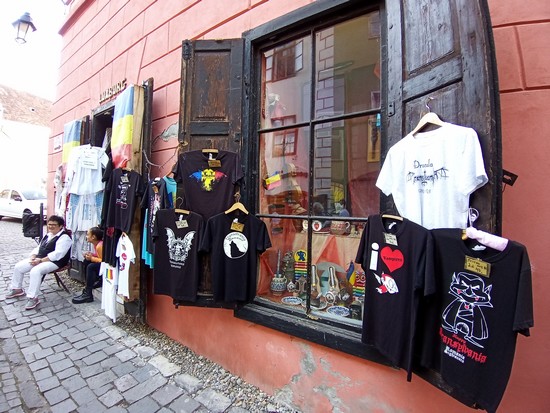 In Sighisoara, history unfurls like a captivating tapestry, inviting travelers to lose themselves in its age-old embrace, to tread the same cobblestones that bore witness to the rise and fall of empires, and to savor the flavors of a land where time has been both kind and relentless. So, whether you come in pursuit of Dracula's legend or simply to savor the timeless allure of this enchanting citadel, Sighisoara promises an experience that will linger in your heart and memory for years to come. 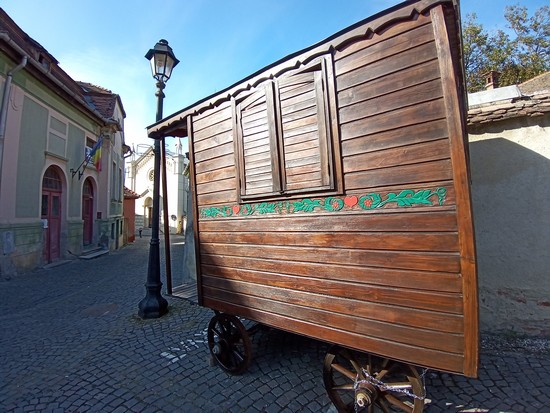 Transylvanian cuisine, a delightful fusion of Hungarian, Romanian, and Saxon influences, deserves to be discovered. Our gastronomic journey in Sighisoara begins with a sizzling plate of Mititei, the undisputed star of Romanian grill culture. These small, succulent sausages are a carnivore's dream come true. Made from a mixture of beef, pork, and spices, they are grilled to perfection, yielding a crispy exterior while remaining juicy and tender inside. Mititei are often served with mustard and fresh bread, making them a beloved street food favorite. Next, we delve into the soul-warming embrace of Cluj stuffed cabbage, locally known as "Varza a la Cluj." This dish exemplifies Transylvania's rich culinary heritage, combining minced meat, typically pork, with rice, and a blend of spices. The filling is carefully wrapped in cabbage leaves, creating tidy parcels of flavor. These bundles are then simmered in a tomato-based sauce until they are tender and infused with a harmonious blend of sweet and savory notes. The dish showcases the artistry of Transylvanian cuisine—simple yet deeply satisfying. No Transylvanian feast is complete without a hearty serving of "Mămăligă," a traditional maize porridge often compared to polenta. It's the perfect accompaniment to almost any dish, providing a comforting, starchy canvas for flavorful sauces and gravies. To satisfy your sweet tooth, indulge in "Papanasi," a delectable dessert unique to Romania. These doughnuts, crispy on the outside and soft on the inside, are typically served with sour cream and fruit preserves. In Transylvania, you might find a local twist with forest berries or plum jam, adding a touch of regional charm to this sweet finale. Enjoy it all with a glass of Ciuc beer, light and refreshing, or a glass of Feteasca Neagra red wine. Romania is ranked 6th wine producer in Europe, and it has some good wineries. Intrepid dinners will experience Tuica: the local brandy. 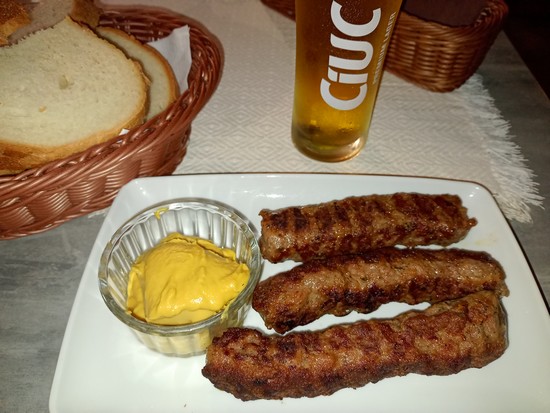 The city offers a wide variety of Airbnb rentals, hostels, and hotels catering to all budgets. We would like to share our one-week stay in the two best accommodations in town – luxurious yet remarkably affordable: Taschler Haus is a hidden gem that promises an enchanting journey through time. As I wandered through this historic Transylvanian town, I stumbled upon this charming luxury guesthouse, tucked away in a quiet corner. with its centuries-old architecture beautifully preserved. The rooms, all different from each others, plushly adorned with antique furnishings and modern amenities, was a cozy haven after a day of exploring the town's rich history. The highlight, however, was the delightful courtyard. Framed by vibrant flowers and overlooked by a centuries-old clock tower, it was the perfect spot for savoring a cup of local coffee or enjoying a glass of Romanian wine under the stars. The hosts, gracious and knowledgeable, shared insider tips on Sighișoara's best-kept secrets, making my stay truly memorable. Taschler Haus is a dreamy retreat where history and hospitality meet, leaving me with memories that will linger long after my journey through Transylvania comes to an end. Mercure Sighisoara Binderbubi Hotel & SPA is a modern oasis, effeciently managed by ACCOR and the super active lady GM, for travelers seeking an unforgettable experience in this enchanting Transylvanian town. From the moment I stepped inside, I was captivated by the blend of contemporary comfort and historic charm. The rooms and large suites, exquisitely decorated with a contemporary twist, offered breathtaking city and countriside views. Each morning, I relished a sumptuous breakfast spread that included local delicacies and international favorites. The real showstopper was the large terrace, a perfect vantage point for savoring a glass of Romanian wine while watching the sunset over the medieval citadel. The Mercure's central location made exploring Sighișoara's cobblestone streets and historic sites a breeze. Plus, the friendly and knowledgeable multinligual staff shared valuable tips for uncovering the town's hidden treasures. BUCHAREST UNVEILED: A CURIOUS TRAVELLER'S GEM ENCHANTING BRASOV: A TRANSYLVANIAN TIME CAPSULE   |


